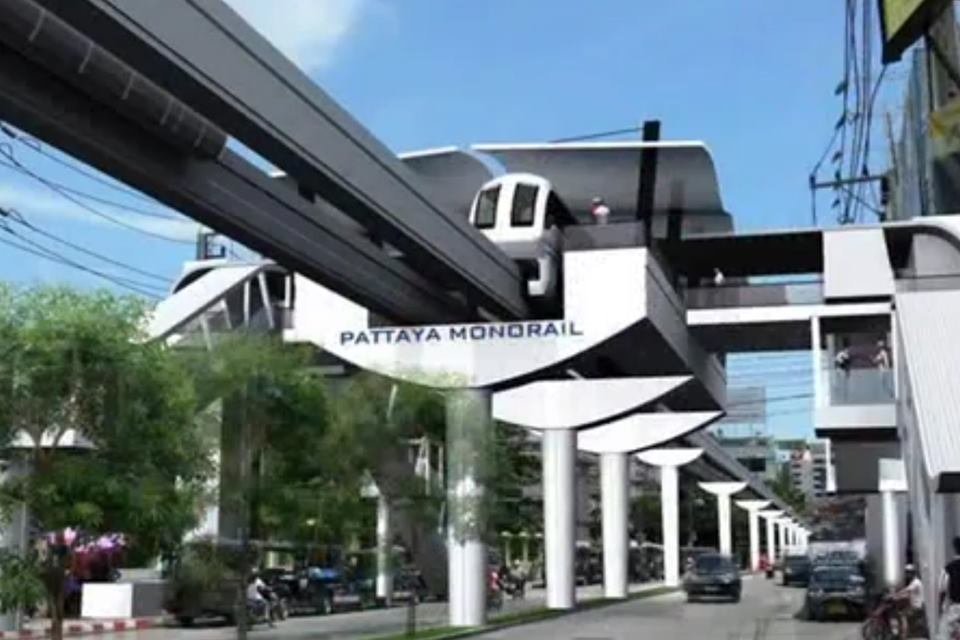
The proposal to fund a Pattaya City monorail project has taken a major step forward with the announcement of a 70 million baht feasibility study to link with much wider infrastructure developments. These include the hi-speed railway project to link Bangkok airports with U-Tapao and the emergence of the neighboring Eastern Economic Corridor (EEC) which is already a multi-billion dollar hi-tech Asean zone with its impressive deep-water ports at Laem Chabang and Rayong.
The idea of a Pattaya monorail was first mooted in the mayoral election campaign of 2008, but there was no progress until last year. Pattaya city authorities have now earmarked a budget of 70 million baht for a feasibility study which will concentrate on Pattaya’s future rather than its past. They believe that the city’s tourism profile is changing fast as dependence on the “Walking Street ethos” – dependence on bars and clubs – gives way to a Pattaya dominated by five star hotels, first class malls and restaurants and a more family-style environment. Pattaya is already an internationally-recognized MICE metropolis, or conference and exhibitions hub.
Deputy Mayor Manote Nongyai said, “It is necessary to reduce the use of private cars whilst moving towards public transport in the form of an electric monorail to promote tourism and to help the industrial sector.” He explained that the nine-kilometre monorail would run from the Pattaya railway system via a motorway, North Pattaya Road, and Second Road, then covering most well-known shopping and entertainment spots before ending up at Bali Hai pier.
A monorail system is preferred over a ground level electric train or underground system as it would be both cheaper and less disruptive during the construction phase. Monorails are quieter than diesel transport and usually take their power from the track structure and not from unsightly overhead power lines and poles.
There are most-decidedly critics of the Pattaya monorail project, although they have been muted of late. Baht bus drivers fear for their livelihood and there is a suspicion from tour operators that cars and coaches would be banned from the city centre, as has already happened to some extent in Cambodian cities. Many shop and store owners fear they would lose much of their foot traffic once potential customers are lost.
But most observers think the project will go ahead this time, if only because Pattaya is no longer an isolated tourist destination but an integral part of the three province Eastern Economic Corridor. The whole project will likely cost around 30 billion baht and be funded under a public-private partnership model widely used in EEC projects.
A City Hall spokesman said, “Major motorways have already been built which was phase one. Phases two and three are the Pattaya monorail and the building of the ambitious hi-speed train network linking the whole area to Bangkok. An integrated transport system is the key to Pattaya’s future. It won’t happen overnight. By the end of this decade, the dramatic transformation will be complete.”





